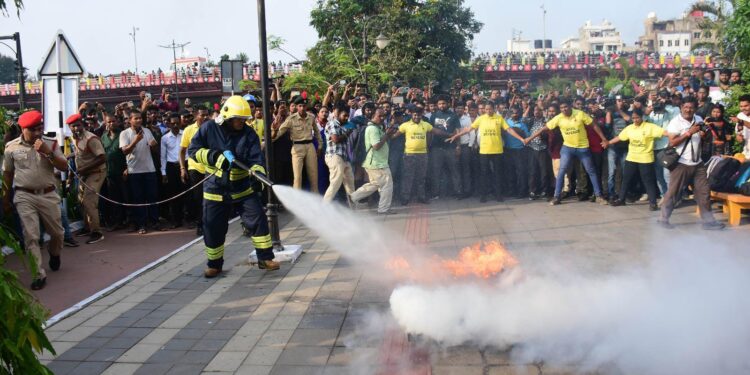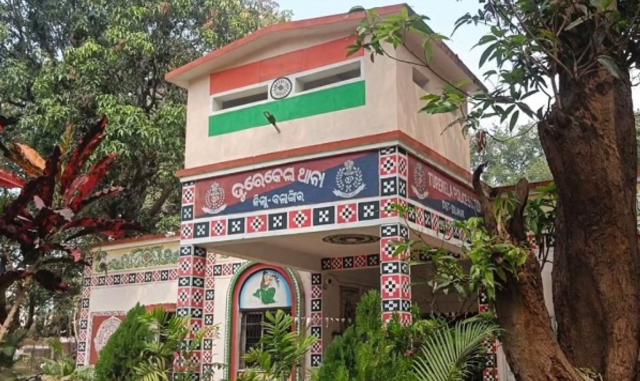In a significant step toward enhancing national security and public safety, Odisha joined a nationwide initiative by conducting civil defence mock drills across 12 strategic districts on Wednesday, May 7, 2025.
The exercises, part of the Ministry of Home Affairs’ (MHA) “Operation Abhyas,” were designed to test emergency response systems and prepare civilians for potential threats amid escalating geopolitical tensions following the April 22 Pahalgam terror attack.
The drills, coordinated by the Odisha State Disaster Management Authority (OSDMA) and other key agencies, simulated wartime scenarios, including air raids, blackouts, and rescue operations, to ensure readiness in the face of complex emergencies.
Statewide Coordination and Planning
The meticulously planned mock drills took place in Bhubaneswar, Khordha, Balasore, Bhadrak, Kendrapara, Ganjam, Jagatsinghpur, Dhenkanal, Puri, Koraput, Sundargarh, and Angul, identified as key civil defence districts due to their strategic importance, including military bases, industrial hubs, and coastal vulnerabilities. High-value targets such as Hirakud, Paradeep, Rourkela, and Charbatia (Choudwar) were specifically highlighted for their critical infrastructure.
Dr. Umashankar Dash, Deputy Inspector General of Fire & Emergency Services and Home Guards, Odisha, emphasized the collaborative effort, stating, “The mock drills were conducted at 12 locations across Odisha, involving Civil Defence Volunteers, NSS, NCC, fire services, police, the Army, Bharat Scouts and Guides, and other voluntary organizations.” The drills commenced at 4 PM, with alert sirens sounding across the state to signal the start of the simulated emergency scenarios.
Execution of the Drills
Civil Defence Mock Drill was successfully conducted today at Rajmahal Square, Bhubaneswar, with the objective of raising awareness among citizens about emergency preparedness and response. The exercise witnessed active participation from multiple teams and stakeholders, including the Civil Defence Team, Fire Services, District Administration, BMC, Health Department, Civil Services, NCC Scouts, Army, Police, and other allied organisations.
In coastal districts like Balasore, Kendrapara, and Jagatsinghpur, the Odisha State Emergency Operation Centre (SEOC) and District Emergency Operation Centres (DEOCs) activated alert siren systems installed at Multi-Purpose Cyclone Shelters (MCSs). Task forces at these shelters participated actively, simulating evacuation procedures and rescue operations tailored to coastal threats. The OSDMA reported that these exercises were critical for preparing communities vulnerable to both natural disasters and potential security threats.
Sambalpur and Rourkela, industrial hubs in western Odisha, focused on protecting critical infrastructure, such as the Hirakud Dam and steel plants. The drills included blackout procedures, where power was briefly cut to simulate wartime conditions, and civilians were trained to reduce visibility to hostile forces. In Puri, a major tourist and religious destination, the mock drill emphasised crowd management and rapid evacuation to ensure the safety of pilgrims and visitors.
Public Participation and Awareness
A key objective of the mock drills was to train civilians, including students, on civil defence protocols. Schools, colleges, and community organisations participated actively, with the National Cadet Corps (NCC), National Service Scheme (NSS), and Bharat Scouts and Guides playing pivotal roles. In Bhubaneswar, students were taught sheltering techniques and basic first aid, while in Balasore, volunteers conducted awareness campaigns to educate residents on responding to air raid sirens.
The public was urged to cooperate and remain calm during the exercises. Authorities advised individuals to seek shelter indoors or in nearby concrete structures upon hearing the sirens and to follow safety protocols, such as avoiding open areas and switching off lights during blackouts.
Official Statements and Impact
Odisha’s participation in Operation Abhyas was lauded as a proactive measure to strengthen civil defence preparedness. The MHA’s directive underscored the need for such exercises in light of heightened India-Pakistan tensions, marking the first nationwide civil defence drill since the 1971 war. The initiative aimed to assess the effectiveness of air raid warning systems, test control room functionality, and evaluate evacuation plans, all of which were successfully demonstrated in Odisha.
A post on X by OSDMA highlighted the activation of alert siren systems and the involvement of cyclone shelter task forces, noting that the SEOC and DEOCs remained on high alert throughout the drill.
Alert siren systems installed at MCSs along the coastline were activated during the civil defence mock drill on 07.05.25 at 4 pm. The task forces of cyclone shelters participated in the mock drill. The SEOC & DEOCs of 12 designated districts remained alert during the mock drill. pic.twitter.com/tu8oE7fdHB
— OSDMA Odisha (@osdmaodisha) May 7, 2025
Looking Ahead
The week-long civil defence mechanism mock drills, which began on May 7, will continue in Odisha to further refine emergency response strategies. Authorities plan to conduct follow-up exercises in additional districts and incorporate lessons learned from the initial drills.
As Odisha strengthens its civil defence framework, the successful execution of these mock drills underscores the state’s commitment to safeguarding its citizens and critical infrastructure.
The exercises not only tested operational readiness but also fostered a sense of collective responsibility, ensuring that Odisha is better equipped to face any emergency, be it natural or man-made.
























































